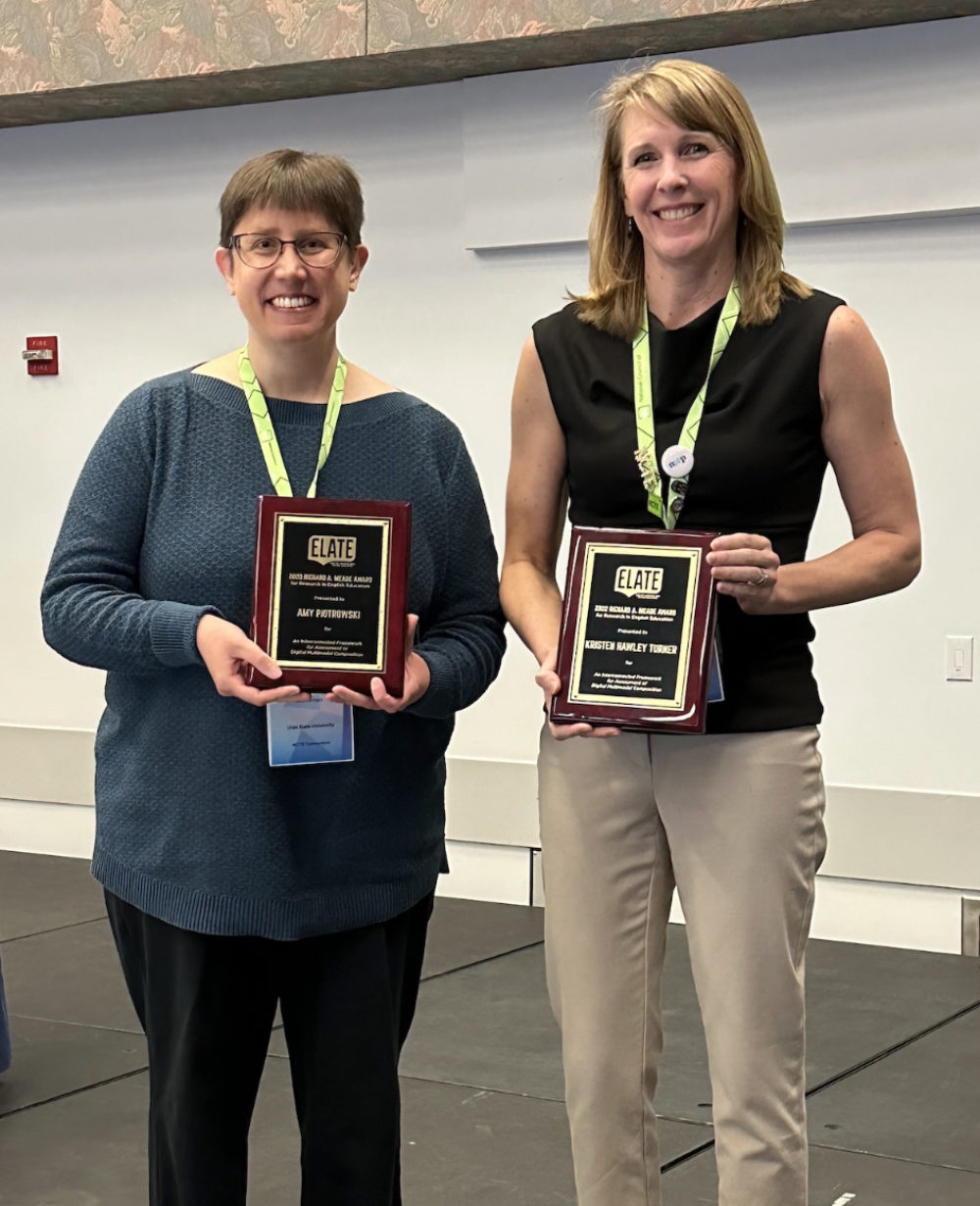Kristen Hawley Turner—professor of education at Drew University, director of the Drew Writing Project, and digital literacy pioneer—received the ELATE/NCTE Richard A. Meade Award in November 2022, recognizing published research-based work that promotes English language arts teacher development at any educational level and in any scope and setting.
The award, offered in even-numbered years, recognizes Turner’s co-authored article “An Interconnected Framework for Assessment of Digital Multimodal Composition.”
The article introduces a new framework for multimodal writing assessment.

For over 20 years, Turner has been researching how technology influences literary practices. She also recently published a co-authored article, “Digital Literacy (Still) Can’t Wait: Renewing and reframing the conversation” in English Journal.
Below is an interview with Turner about the importance of multimodal writing assessment in a digital literacy world.
What is digital literacy?
In the digital world, composition is different than it was before access to the Internet. When we think of writing or composition, it’s not just about writing an essay or putting pen to paper. Composing in a digital world allows writers to use multimedia—images, video, other forms of multimodal writing—and embed that within alphabetic text, or use alphabetic text alongside those multimodal components.
Why is your research on multimodal assessment and composition so important?
When we’re thinking about what makes a good piece of multimodal writing in a digital world, it’s a different assessment than when we’re thinking about what makes a good essay.
My co-authors and I dug into what makes a good piece of multimodal writing and how we can give feedback to and assess students on their multimodal writing so they can get better at it. The result is the article “An Interconnected Framework for Assessment of Digital Multimodal Composition.”
Through our research, we developed a framework that contains a series of questions that teachers can use when assessing student multimodal writing. Much of the framework has to do with the writer actually assessing themselves and thinking through their choices as they are designing in a digital world.
Through the article, the framework is now available to all teachers and students—elementary through college—as well as students and adults in the workforce. The article was written for a researcher audience. We’re working on writing for a teacher audience so it’s more accessible for everyone.
Why is this especially relevant today?
I have been arguing for the importance of teaching digital literacy skills for a very long time.
Today, it’s even more clear that we need to develop critical consumers and creators in a digital world. With most people understanding what it means to work from home or connect via a device, we’re even more digital than before the pandemic began. We really have to change how we think about literacy practices and what we’re doing in schools.
Does your research impact your students at Drew?
Yes, everything ties back to Drew’s innovative programs. DrewTeach runs workshops that are virtual, but focused on how to incorporate technology into reading and writing instruction. We’ll have a series of workshops in the spring that can be taken for credit or professional development.
The Drew Writing Project is participating in the launch of the Certificate of Teaching Writing, which will help teachers of all levels to be better teachers in writing. Because we have an understanding that digital literacies are important and part of what it means to teach writing, there is an emphasis on how technologies impact writing and how we teach writing in this program.
